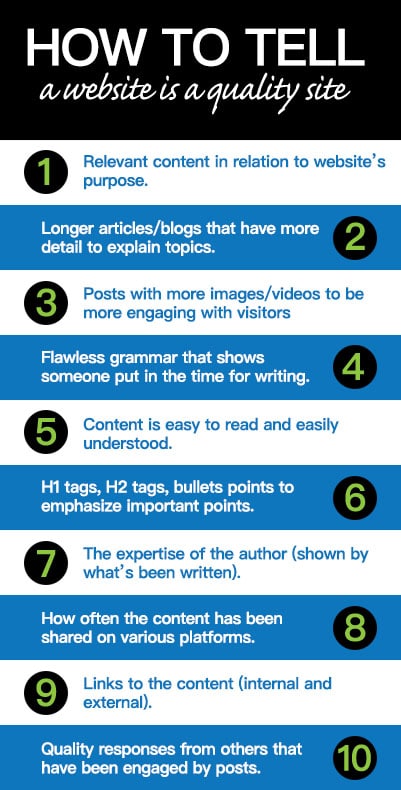
Denver web design firms are at war. SEO is a dynamic, monstrous challenge that requires constant effort and endless learning to tackle. In the backbone of that effort is building a proper list of backlinks. In principle, it is simple, but in practice, it can feel overwhelming. These basic best practices can demystify the monster and make it easier to get started.
Effectively Creating Backlinks
You can’t form a backlink strategy without tackling the basics. It is vital to know how to create them in the first place. Web design in Denver will have different needs than similar design in Akron, but both can benefit from a universal approach. The easiest tools to use anywhere are social media platforms. Your activity there, when applied correctly, can create many strong backlinks. The other primary resource is quality content that you can create.

Creating Content
The fundamental concept of creating content is to focus on quality. No matter your business, there should be at least some idea of an ideal reader. Your content should answer relevant questions for that ideal reader, and, preferably, it will be providing answers that aren’t easily sought in many other places. That tells you what to create, but not where to post it. The instinctive desire is to post everything on a blog section of your main site, but that isn’t enough. Certainly, plenty of good content should go there, but it is also important to actively post good content on other sites. Tumblr, LinkedIn, social media and popular niche sites are all good destination for your content. This is especially important because it enables you to create deliberate backlinks to the main site that is motivating all of this effort.
Following, Sharing and Commenting
All three of these actions work in tandem with your profile to generate value. The question is, which should you do? Spamming for the sake of trying to generate traffic won’t work. The search engines account for this behavior and filter accordingly. The key with social media interactions is the same as any other component of SEO: value quality. You are striving to be competitive in your field, so you can operate as an indicator of quality. If you find a post useful, it’s probably worth sharing. If you can offer counterpoint to something or an alternative, useful idea, then comment. If a content creator regularly produces good stuff, follow them. Using your own judgment will reflect value that is appreciated by ranking engines.
Create a Profile With a Naked URL
For virtually any social media platform, you have to create a profile. The important step is to include a naked URL in your profile that points to the site you are building. When this is done, every interaction you have on the media site will create a path that web crawlers can follow back to you. When you like, comment or share anything of relevance, you are creating backlinks to your ultimate site.
Anchor Links
This lies at the heart of content you create, and it is where keyword research comes into play. Anchored links are one of the most valuable resources for search engines. For example the term, DUI Lawyer Near Me, is linked to a local DUI Attorney, Michael J. Sheehan. The link builds the pathway that lets the web bots know where to find you. The anchored text helps them identify who needs your content and website. This is why you want to anchor your text to key words and phrases that you have identified, and there are plenty of resources to help you do that.
When you identify worthwhile keywords, they should have your backlink anchored to them directly. Keep in mind that doing this too frequently will get you flagged as spam and destroy your ranking. A rule of thumb is to keep key words down to 1 inclusion per 100 words of text. It won’t hurt to be even sparser than this. You also only want one link to a single page per piece of content. For example: if you have an auto body shop, the landing page of that site should only have one anchored link in your blog post about DIY dent removal. A second page from your main site could conceivably be linked in that same post, but only if it makes obvious sense to do so. This is true whether you are posting on your own blog or another site.
Finding Quality Sites
The value in backlinks is that they help both search engines and potential customers find your site. This is a two-directional process. Denver SEO practices can create quid pro quo situations between many local businesses. This creates backlinks on your site that point to other resources, and many of them can point to yours. Obviously, just linking to anyone and everyone doesn’t create a clear pathway to get back to you, and search algorithms won’t know where to rank you for any site. To overcome this, you need reliable ways to discern better linking sites from lesser alternatives.
It comes up over and again: focus on value. If you find that a particular website is valuable to you as an expert in your niche, then it is probably a good target for backlinks. This should be in your mind as you follow these other tips.
Copy
Don’t worry. This doesn’t involve anything illegal. The premise is to see what successful competitors are doing and copy their good ideas. If Ford creates a new safety feature that clearly saves lives, you can bet the other auto manufacturers will be close behind. This concept works in any field. So, investigate your competitors. See who receives their links. More importantly, use search tools to find who is linking back to them. If you are genuinely competitive, then anyone hosting them is likely to value you as well.
Cite Your Resources
Building your content requires research. You didn’t become an expert randomly. You learned. The resources that helped you get to this point will be valuable to others, so provide links to them. If you have a working relationship with these resources, they can reciprocate, but even if they can’t, this is how you create quality outgoing links.

Replace Broken Links
If you have found a good site that you want to point back to you, but you are having trouble getting a foot in the door, this is the technique to use. If you don’t have a target, find them by simply searching for your most valuable keywords and see who is at the top. Once a target is acquired, you can use the Broken function in Site Explorer or anything comparable. It will help you identify backlinks for the target website that no longer work. Once you have a link, you can look up the content on archive.org. Then, you can write your own replacement for that content. Be sure to avoid plagiarism! Now that you have found a broken link and have a superior replacement, you can content the site host and make a pitch. Inform them of a problem and give them the link to your blog post.
Update Regularly
When you focus on Denver web design, there are two components to updating your content. The first is obvious. Trends move fast online, so you need to consistently produce relevant content. This keeps your value high and your audience engaged, and it works best when you pair your content updates with social media. Automated updates are valuable here, because you want your social media outreach to inform followers every time you have something new to offer.
The other important component of updates is to keep track of your links. Broken links may help you get the foot in the door with other sites, but they hurt your SEO efforts. You can use those same search tools on your own website and keep broken links from piling behind the scenes.
Reach out to Others
Guest blogging is an interesting part of SEO. It was discovered virtually on accident, and it was quickly exploited. The gurus behind search algorithms have long since accounted for guest blogging, but that has not eliminated its value. The same methodology that helps you find good backlinks can help you find good guest blogs, and once again, this is a two-way street. A good article on your blog written by someone else can offer insight and value you could never provide on your own. More importantly, writing good stuff on related blogs provides valuable backlinks for you.
Practice Patience
You just read a lot of advice about creating backlinks. Following all of these tips for even a single URL will require hours of work. Multiply that by the body of link that you want, and you can see that this is no overnight process. Conversely, it is achievable. Set short-term goals and stick to a schedule. You can chip away at the mountain of work ahead, and every step of progress builds on the previous efforts. If you remain diligent, you can get a snowball rolling, and it will be easier to keep up with the workload of managing your search engine optimization.
About Tag Team Design
For small to medium enterprises, Tag Team Design is the partner that truly drives incremental customer demand. Unlike traditional digital agencies, Tag Team Design takes a team approach to creating profitable strategies for each and every client. Contact us today!
The Business Journal recently named us a top-15 Denver web design agency; come find out why.

Sources:
crazyegg.com/blog/smart-ways-get-quality-backlinks/
neilpatel.com/blog/how-to-build-high-quality-backlinks-in-a-scalable-way/

